|
|
|||
|
HOME
|
US Navy -
ships
|
US Navy - air
units
|
USMC - air
units
|
International
Navies
|
Weapon Systems
|
Special Reports |
|||
|
|
|||
|
|
|||
|
Spanish Navy / Armada Espanola -
Amphibious Assault Ship/Aircraft Carrier L 61 SPS Juan Carlos I |
|||
|
|
|||
|
sorry, no insignia |
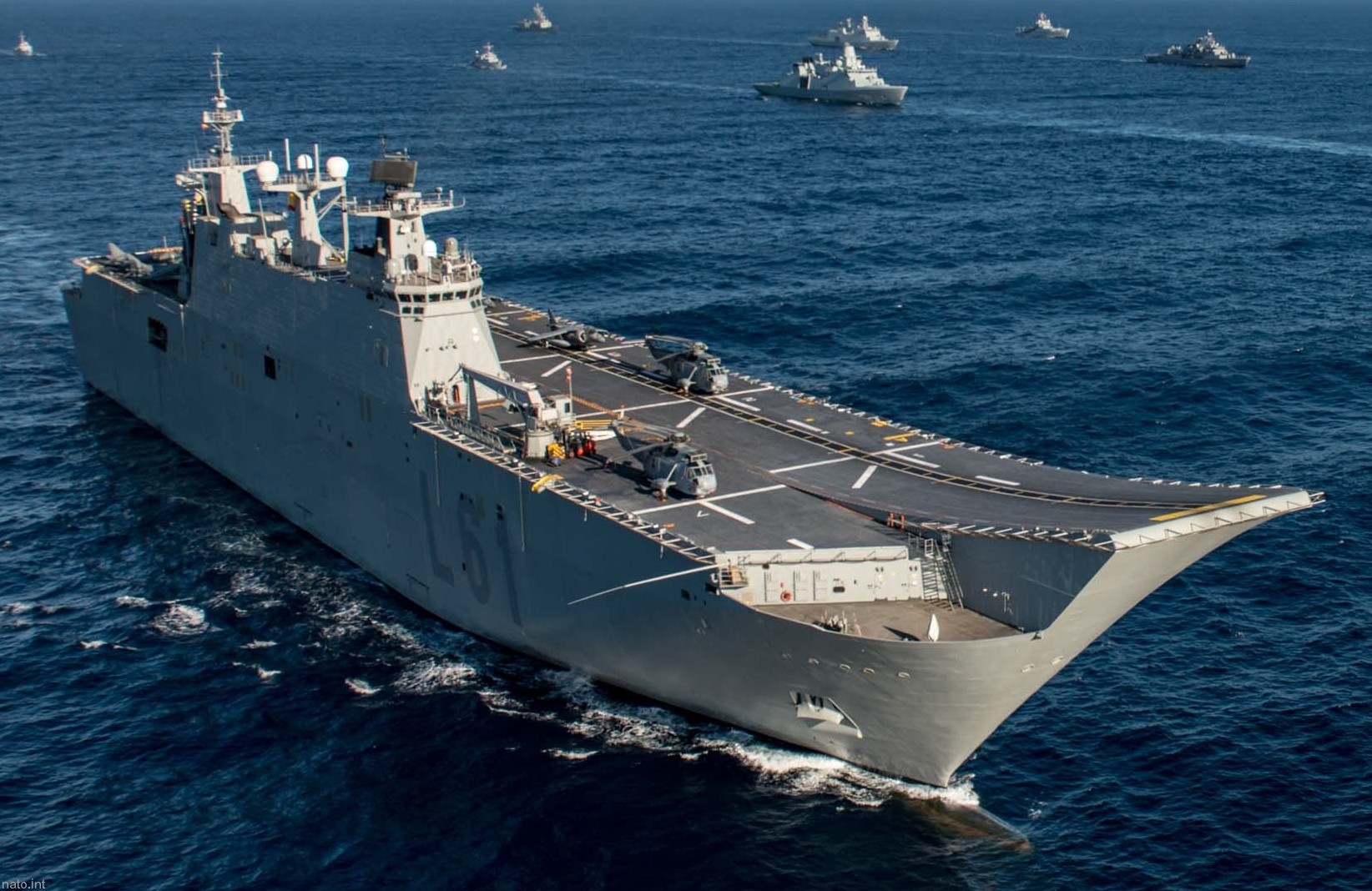 |
||
|
|
|||
|
|||
|
|
|||
| images | |||
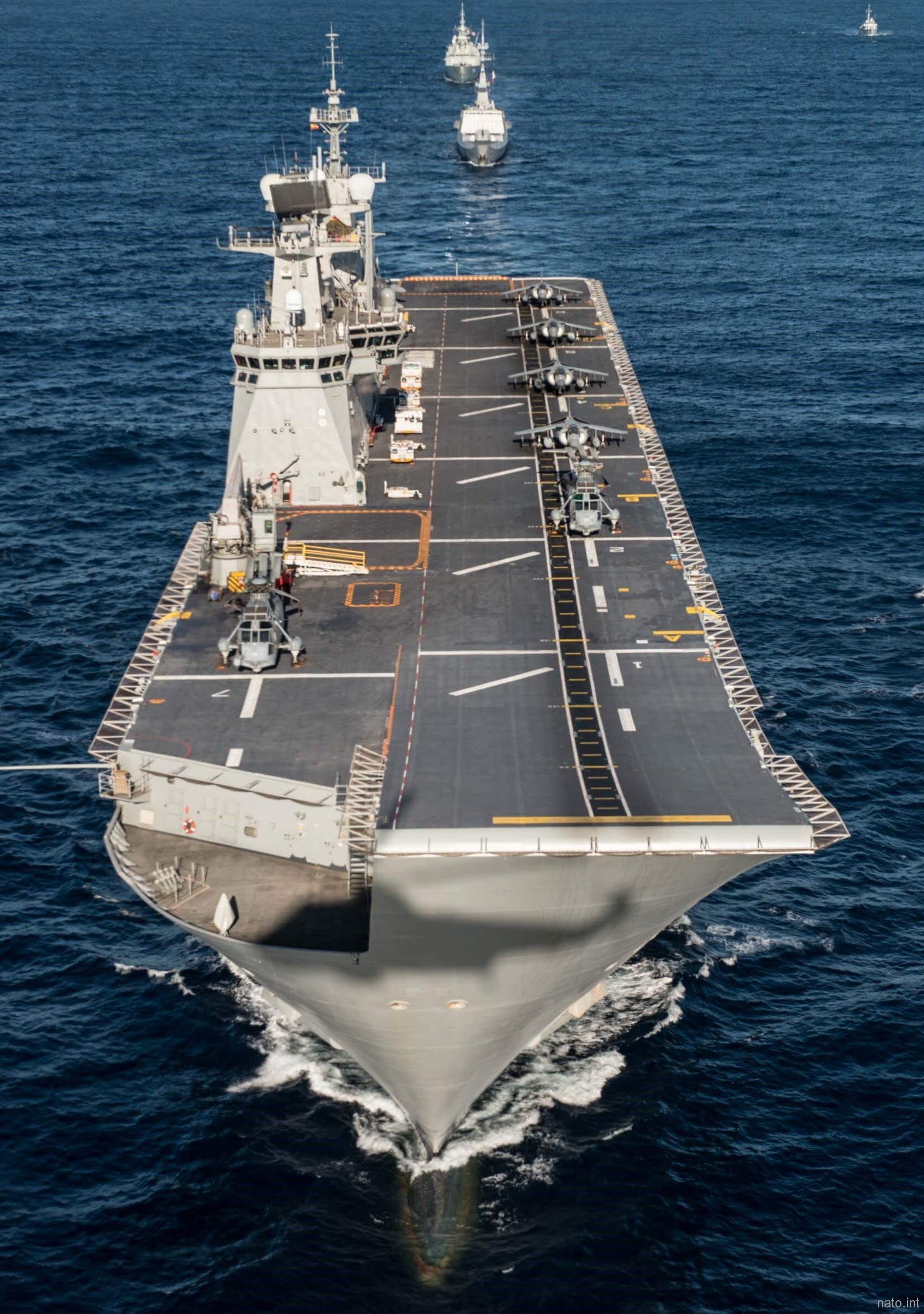    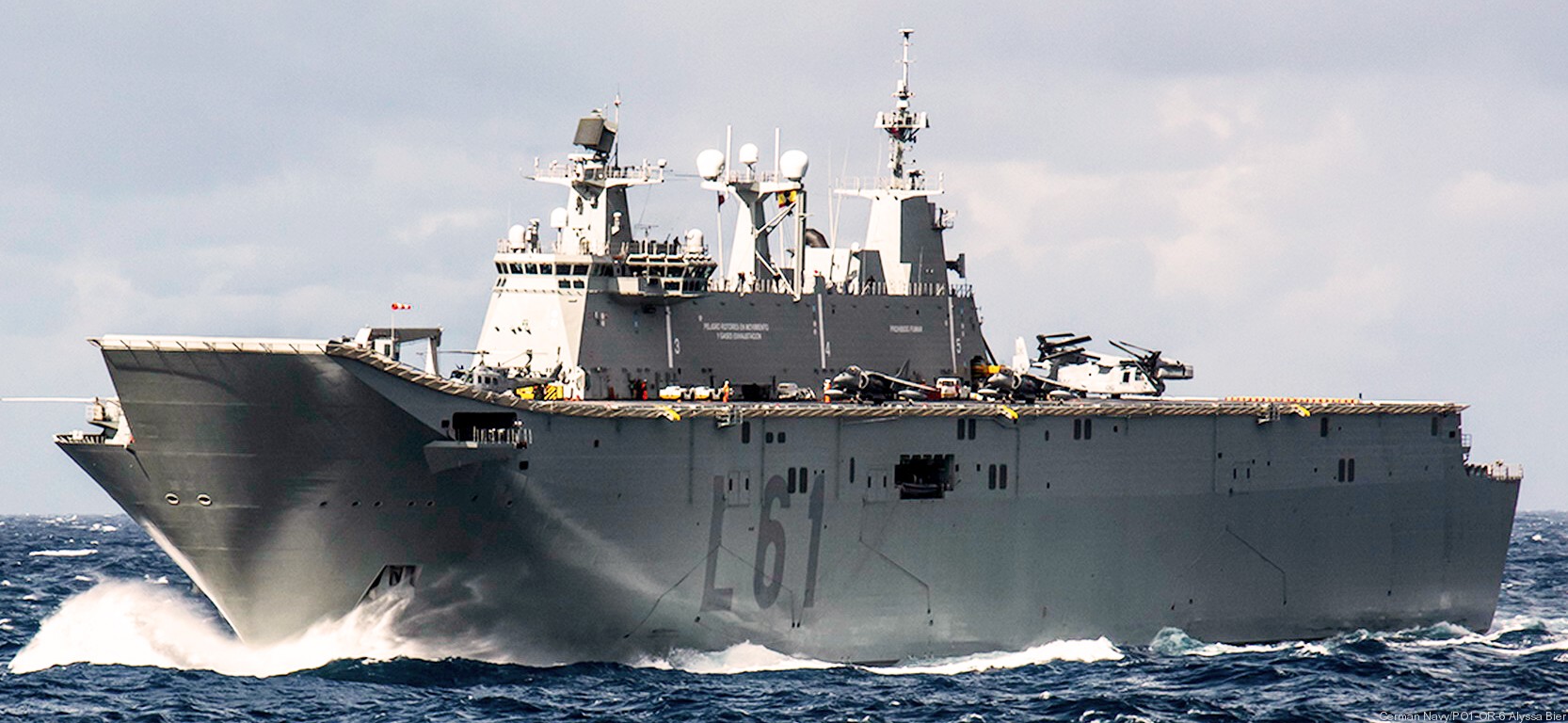 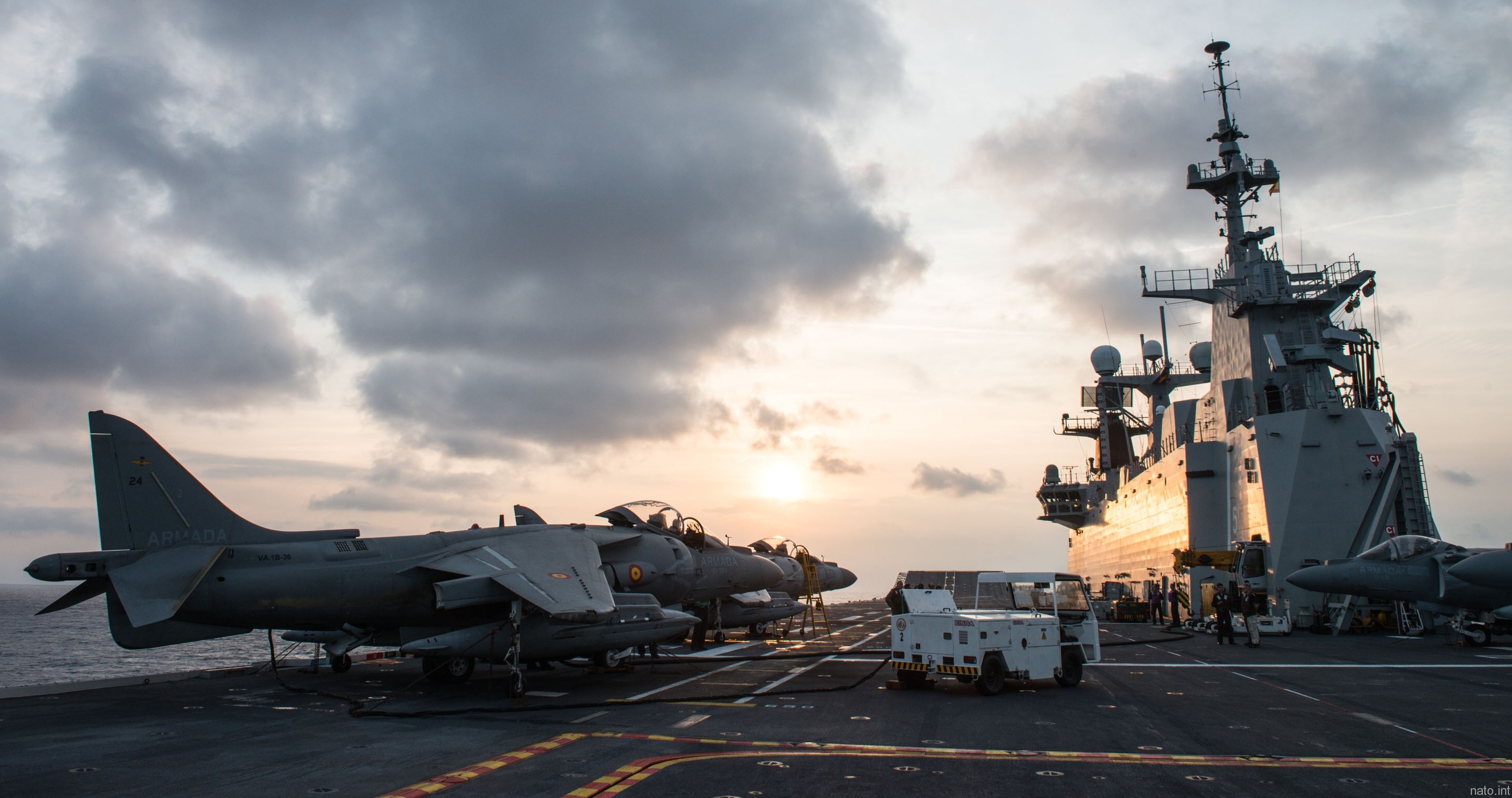 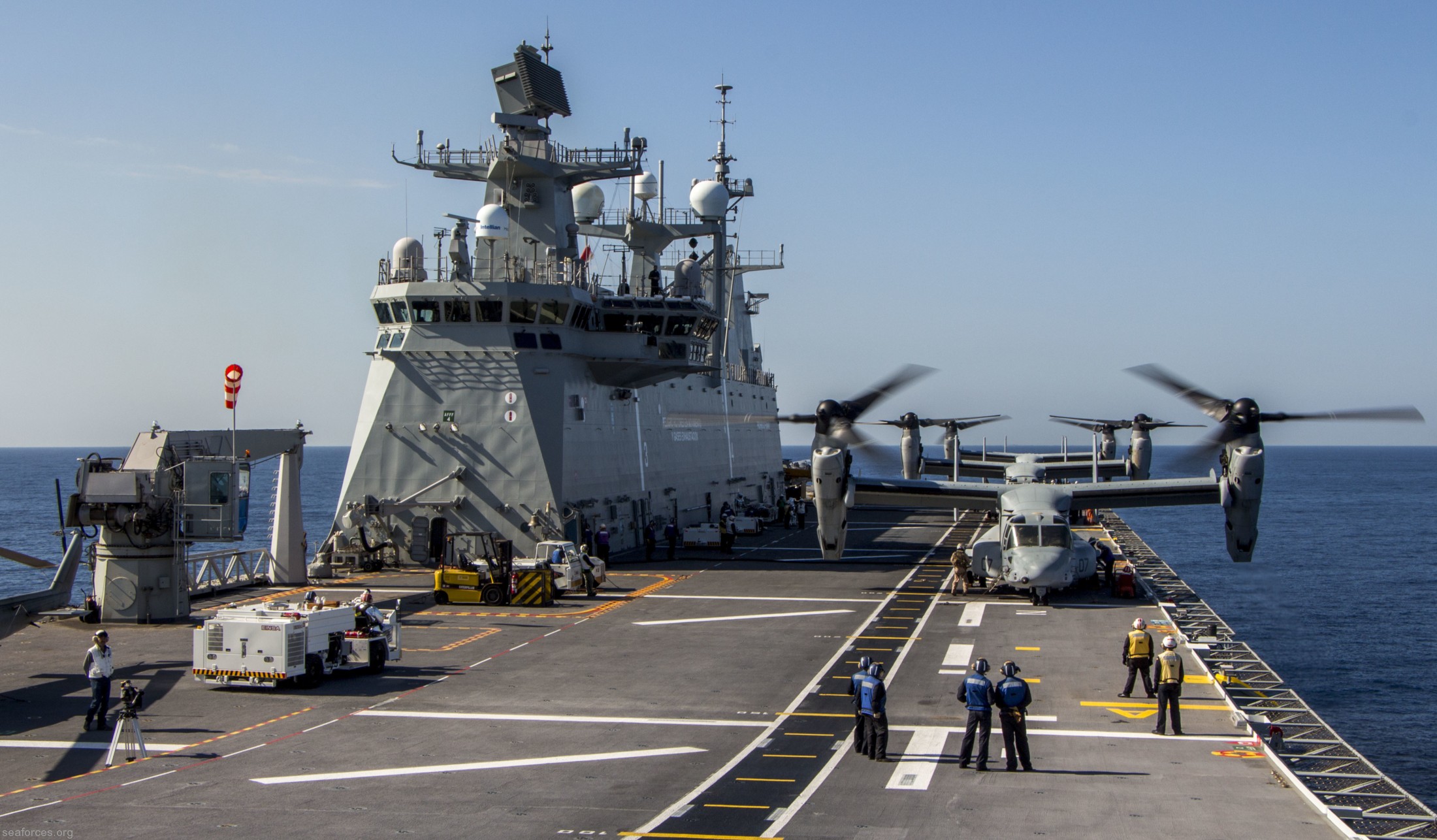 USMC MV-22B Ospreys aboard SPS Juan Carlos I (L 61) - October 2015 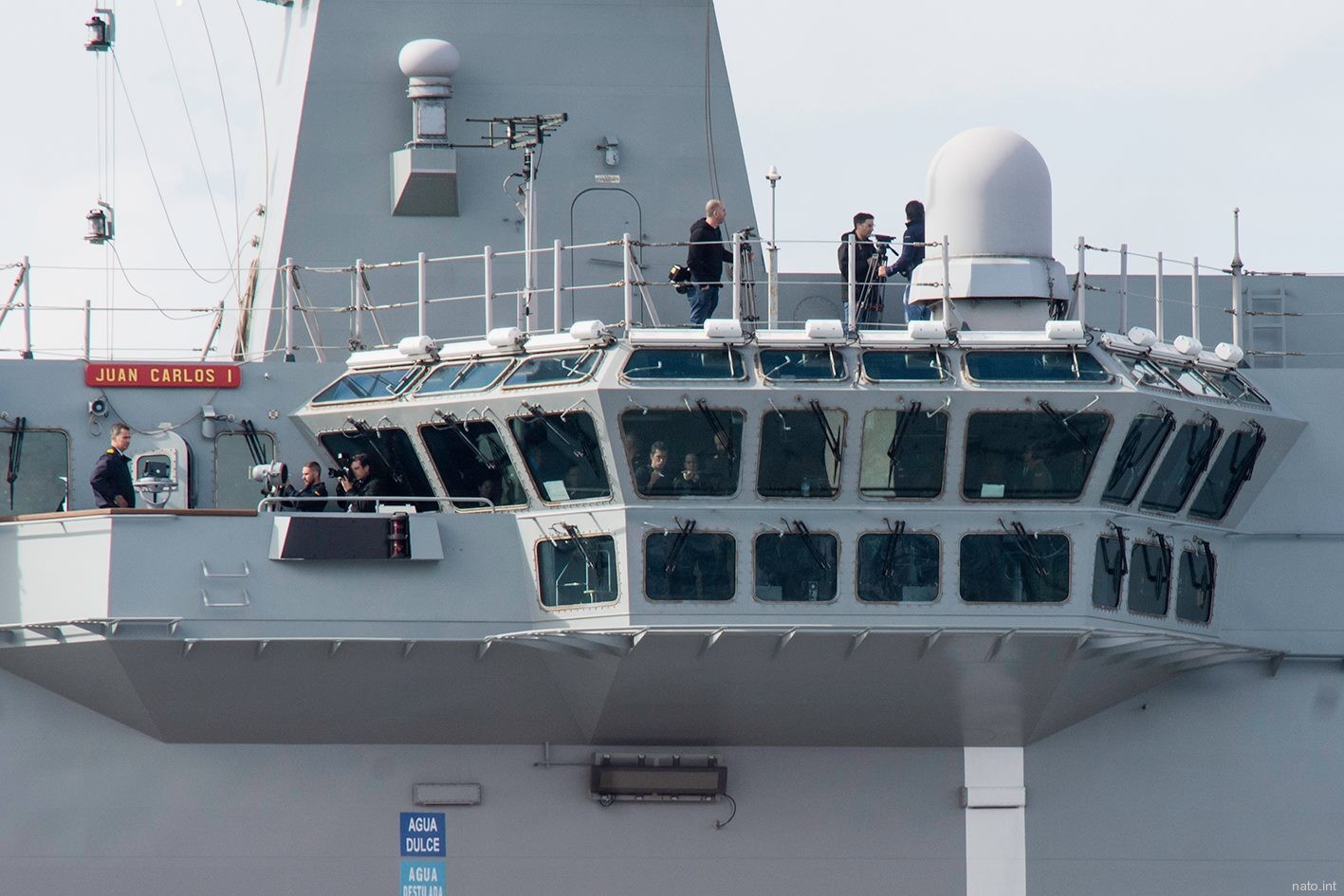 |
|||
|
|
|||
|
Juan Carlos I is a multi-purpose amphibious assault ship-aircraft
carrier in the Spanish Navy (Armada Española). Similar in role to
many aircraft carriers, the ship has a ski jump for STOVL
operations, and is equipped with the AV-8B Harrier II attack
aircraft. The vessel is named in honour of Juan Carlos I, the former
King of Spain. The new vessel plays an important role in the fleet, as a platform that not only replaces the Newport-class LSTs Hernán Cortés and Pizarro for supporting the mobility of the Marines and the strategic transport of ground forces, but also acts as a platform for carrier-based aviation replacing the now withdrawn aircraft carrier Príncipe de Asturias. The design for the Buque de Proyección Estratégica (Strategic Projection Vessel), as it was initially known, was approved in September 2003. The vessel has a flight deck of 202 metres (663 ft), with a ski-jump ramp. The ship's flight deck has eight landing spots for Harrier, F-35 Lightning II or medium-sized helicopters, four spots for heavy helicopters of the CH-47 Chinook or V-22 Osprey size. The ship can carry either 30 helicopters or 10/12 McDonnell Douglas AV-8B Harrier II or Lockheed Martin F-35 Lightning II and 10/12 helicopters, using the light vehicles bay as an additional storage zone. For the first time in the Spanish Navy, the ship uses diesel-electric propulsion, simultaneously connecting both diesels and the new technology gas turbine powerplant to a pair of azimuthal pods. The complement of the ship is around 900 naval personnel, with equipment and support elements for 1,200 soldiers. Multi-functional garage and hangar space on two levels covers 6,000 m2 (65,000 sq ft), with capacity for 6,000 tonnes load on each level. A stern well deck measuring 69.3 by 16.8 m (227 by 55 ft) can accommodate four LCM-1E landing craft which can beach-deliver non-swimming ground vehicles like tanks and four RHIBs, or one Landing Craft Air Cushion plus Assault Amphibious Vehicles. Construction of the 231 m (758 ft), 27,000-tonne ship started in May 2005 simultaneously at the Navantia Shipyards in Ferrol, Galicia (with the cut of the first plate corresponding to Block 320) and in Fene, Galicia (with the cut of the first plate corresponding to Block 330). The ship, that supposes a service load of 3,100,000 hours of production and 775,000 hours of engineering, was launched 10 March 2008, and was commissioned 30 September 2010. The original budget was €360 million but the ship cost €462 million (US$600 million) in the end. source: wikipedia |
|||
|
|
|||
|
Juan Carlos I: Juan Carlos Alfonso Víctor María de Borbón y Borbón-Dos Sicilias, born 5 January 1938) reigned as King of Spain from 1975 until his abdication in 2014. Juan Carlos is the grandson of Alfonso XIII, the last king of Spain before the abolition of the monarchy in 1931 and the subsequent declaration of the Second Spanish Republic. Juan Carlos was born in Rome, Italy, during his family's exile. Generalísimo Francisco Franco, the Spanish dictator who initiated the civil war by means of a coup d'état against the constitutional republic in 1936, took over the government of Spain after his victory in the Spanish Civil War in 1939, and in 1947 Spain's status as a monarchy was affirmed and a law was passed allowing Franco to choose his successor. Juan Carlos's father, Juan, was the fourth child of Alfonso, who had renounced his claims to the throne in January 1941. Juan was seen by Franco to be too liberal and in 1969 was bypassed in favour of Juan Carlos as Franco's successor and next head of state. Juan Carlos spent his early years in Italy and came to Spain in 1947 to continue his studies. After completing his secondary education in 1955, he began his military training and entered the General Military Academy at Zaragoza. Later, he attended the Naval Military School, the General Academy of the Air, and finished his tertiary education at the University of Madrid. In 1962, Juan Carlos married Princess Sophia of Greece and Denmark in Athens. The couple had two daughters and a son together: Elena, Cristina, and Felipe. Due to Franco's declining health, Juan Carlos first began periodically acting as Spain's head of state in the summer of 1974. Franco died in November the following year and Juan Carlos became king on 22 November 1975, two days after Franco's death, the first reigning monarch since 1931; although his exiled father did not formally renounce his claims to the throne in favor of his son until 1977. Expected to continue Franco's legacy, Juan Carlos, however, soon after his accession introduced reforms to dismantle the Francoist regime and begin the Spanish transition to democracy. This led to the approval of the Spanish Constitution of 1978 in a referendum, which re-established a constitutional monarchy. In 1981, Juan Carlos played a major role in preventing a coup that attempted to revert Spain to Francoist government in the King's name. In 2008, he was considered the most popular leader in all Ibero-America. Hailed for his role in Spain's transition to democracy, the King and the monarchy's reputation began to suffer after controversies surrounding his family arose, exacerbated by an elephant-hunting trip he undertook during a time of financial crisis in Spain. In 2014, Juan Carlos, citing personal reasons, abdicated in favour of his son, who acceded to the throne as Felipe VI. source: wikipedia 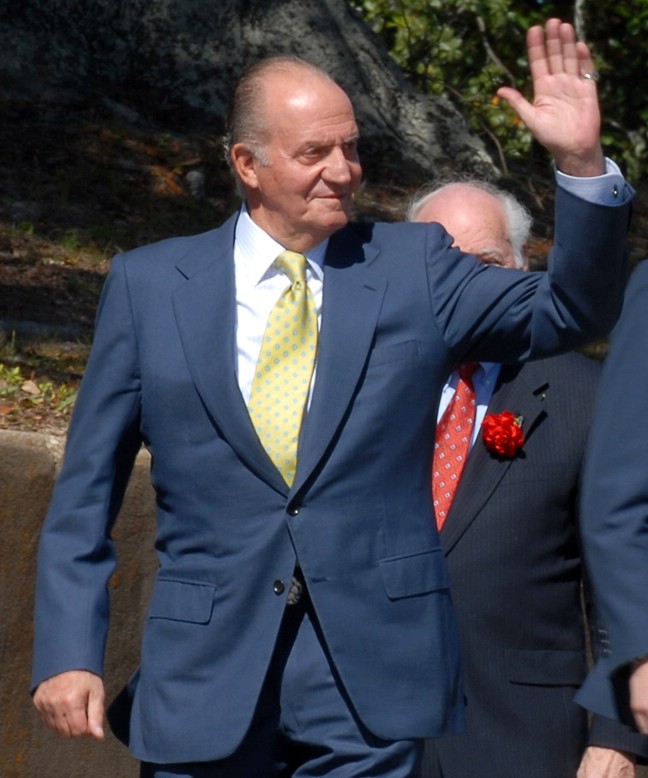 |
|||
|
|
|||
| patches + more | |||
|
|
|||
|
|
|||
|
|
seaforces.org
|
Spanish
Navy start page
| |
|||
